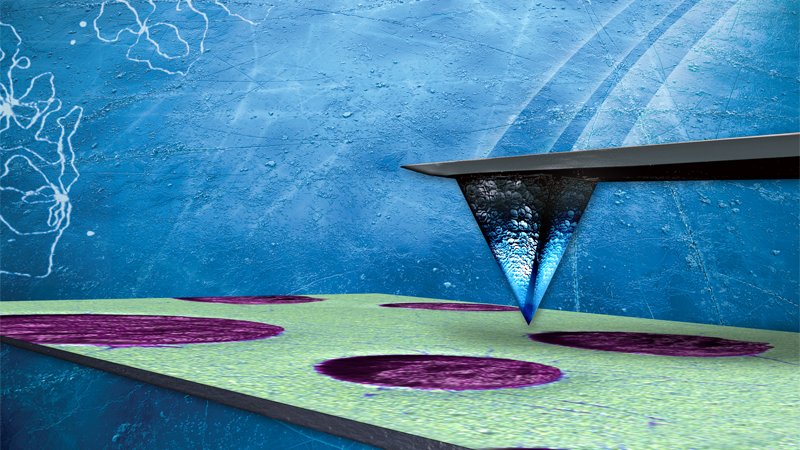Lateral Force Microscopy (LFM)
Friction information with the ease of contact mode imaging
Lateral Force Microscopy (LFM) is derived from Contact Mode imaging. In Contact Mode, the vertical bending of the cantilever probe is measured as it scans across the surface. By also measuring the lateral bending of the cantilever, information regarding the surface friction characteristics of a sample can be determined.
Lateral forces can arise from changes in the frictional coefficient of a region on the sample surface or from onsets of changes in height. LFM is therefore useful for measuring lack of homogeneity in surface materials and producing images with enhanced edges of topographic features.
Langmuir-Blodgett single-layer thin film made of a mixture of behenic acid (BA) and diphenyl bis-(octadecylamino)phosphonium bromide (DPOP).


